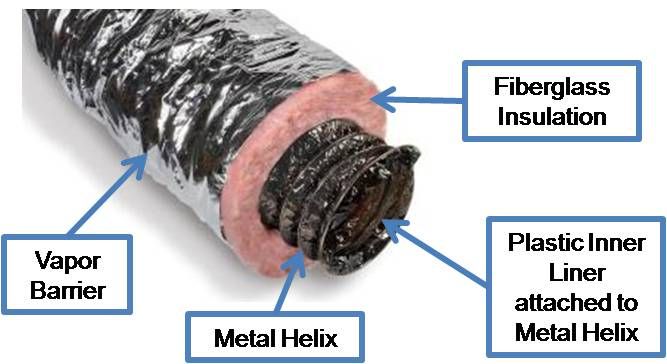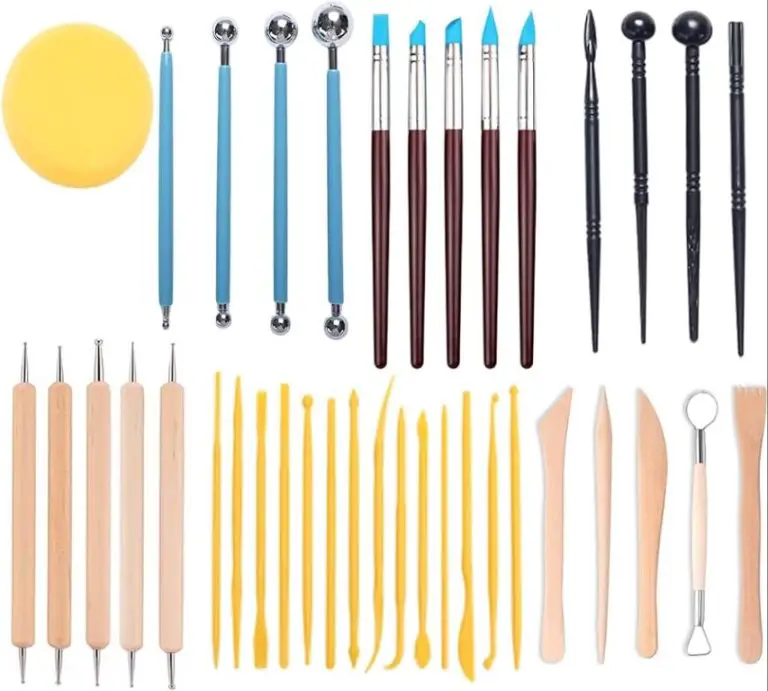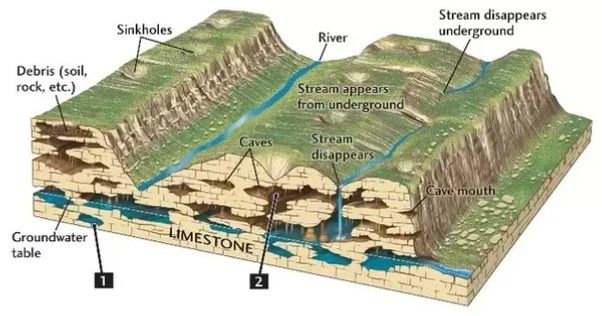What Are The 4 Rules For Flexible Ducts?
Flexible ducts are ducts used for distributing air in heating, ventilation, and air conditioning (HVAC) systems. They are typically constructed out of metal wire helixes with an outer plastic or foil covering. Flexible ducts are commonly used to connect rigid sheet metal ducts to diffusers, registers, and grilles. They provide more flexibility than rigid ductwork for routing connections through joists and around obstructions.
There are four key rules that should be followed when installing flexible ducts:
- Do not bend ducts across or around obstructions – this can restrict airflow.
- Do not use flexible ducts outdoors – they are intended only for indoor use.
- Do not install ducts in unconditioned spaces – temperature extremes can impact performance.
- Keep duct runs short – excessively long runs can reduce airflow.
Properly following these four rules is crucial for ensuring flexible ducts deliver air efficiently and do not compromise system performance.
Rule 1: Do Not bend ducts across or around obstructions
Bending flexible ductwork sharply across or around obstructions severely restricts airflow through the ducts. When airflow must turn a sharp corner, the air molecules collide with the duct walls, creating turbulence and friction that reduces velocity and volume of airflow. The more twists, kinks, and bends in the ductwork, the greater the turbulence and loss of airflow.1

Examples of obstructions that flexible ducts should not be bent around include beams, columns, electrical conduits, plumbing pipes, and other HVAC components. Sharp 90-degree turns are especially problematic. To maintain proper airflow, flexible ducts should be routed in gradual long-radius turns whenever possible. If a sharp bend is unavoidable, use hard ductwork for that section rather than forcing flexible ductwork to make an acute turn.
Rule 2: Do not use flexible ducts outdoors
Flexible ductwork is not designed for outdoor use and exposure to the elements will cause it to degrade rapidly. UV rays from sunlight, in particular, will break down the outer plastic jacket and inner lining of flexible ducts (source). Rain and moisture will also penetrate the outer jacket, causing internal rust and mold growth.
Examples of outdoor applications to avoid with flexible ductwork include:
- Exposed duct runs across rooftops or along exterior walls
- Connections to outdoor HVAC units, dryer vents, or barbecue hood vents
- Ducts run through uninsulated attics, garages, or crawlspaces
Rigid metal ductwork should always be used for connections exposed to outdoor elements. Flexible ducts are only suitable for indoor runs within conditioned spaces (source). Attempting to use flexible ductwork outdoors will lead to rapid failure.
Rule 3: Do not install ducts in unconditioned spaces
Unconditioned spaces like attics, garages, and crawlspaces can expose ductwork to extreme temperatures that can decrease system performance and efficiency. According to this source, the heat transfer between ducts and unconditioned spaces can add as much as 30% to your energy costs.
When ducts run through unconditioned spaces, the temperature differential causes heat or cold to transfer into or out of the ducts. For example, hot attic air in the summer can heat up the air flowing through the ducts before it reaches your living spaces. This forces your AC system to work harder to cool your home.
Unconditioned crawlspaces and garages expose ducts to temperature swings that also lead to energy losses. Even short runs crossing unconditioned spaces pick up heat gains and losses. For optimal efficiency, all ductwork should be contained entirely within the home’s conditioned envelope.
Rule 4: Keep duct runs short
One of the most important rules for flexible ductwork is to keep the runs as short as possible. Longer duct runs lead to increased airflow resistance and turbulence, reducing the system’s efficiency. Friction within the duct causes some of the energy to be lost before the air reaches the registers. The longer the run, the more energy is wasted overcoming friction.
Industry standards recommend limiting flexible duct runs to no more than 5-6 feet in length for optimal performance. As the run length increases, the static pressure loss rises exponentially. Runs longer than 10 feet can lose 50% or more of their airflow capacity and efficiency. Limiting duct lengths also makes it easier to properly support the ductwork.
To cite one source: “Good practice is to use less than 2 meters or less than 6 feet. The issue is the high air friction as well as supporting the flex duct to prevent sags and kinks.” (Source)
Proper Support for Flexible Ducts
Flexible ducts require proper support in order to maintain airflow efficiency. According to the ADC Flexible Duct Performance & Installation Standards manual, support must be provided within 1 foot of the duct collar and a maximum of every 4 feet for the entire duct run (https://flexibleduct.org/images/ADC~IR5E.pdf). Fiberglass duct board, band irons, or metal straps are commonly used to provide rigid support. Flex duct should only sag 1/2 inch for every 1 foot between supports, as sagging ducts restrict airflow and performance (https://www.greenbuildingadvisor.com/article/how-to-install-flex-duct-properly).
Signs of improper support include:
- Excessive sagging or drooping of ductwork
- Creases, kinks, or flattened sections
- Disconnected joints at collars or fittings
- Noise or whistling from air turbulence
- Condensed water accumulation inside ducts
Proper duct support is crucial for maintaining velocity and delivering conditioned airflow efficiently through the system. Improperly supported ducts lead to restricted airflow, increased resistance, and energy losses.
Sealing Flexible Duct Joints
Proper sealing of flexible duct joints is crucial for an efficient HVAC system. Leaky ducts can reduce airflow by up to 30%, forcing the HVAC system to work harder and increasing energy costs. Sealing ducts also helps improve indoor air quality by preventing dust and allergens from being drawn into the duct system. There are several methods for sealing flexible duct joints:
Duct sealant (also called mastic) is a paste-like material that is brushed onto the joints between flexible ducts and fittings. Top brands like Design Polymerics and Gardner Bender provide long-lasting seals. A layer of mesh tape can be embedded into the sealant for added strength.
Foil tape composed of an adhesive film with a foil backing provides an airtight seal when wrapped around the joint. But foil tape alone does not block vapor transmission and may deteriorate over time. Combining foil tape over sealant creates a durable seal.
Drawbands use a stainless steel clamp to compress the flexible duct onto a fitting for a tight seal. They provide a reliable metal-to-metal connection but can be labor intensive to install.
Regardless of the sealing method, it is critical to follow manufacturer instructions to create long-lasting, airtight seals between flexible duct components.
Insulating Flexible Ductwork
Properly insulating flexible ductwork provides several important benefits. Insulation helps maintain the temperature of the air flowing through the ducts for improved efficiency and occupant comfort. It prevents condensation from forming on the exterior of cooled ducts in hot, humid climates. Insulation also reduces noise from the airflow inside ducts. Additionally, insulating ducts located in unconditioned spaces like attics and crawlspaces protects them from damage and deterioration.
For flexible ducts installed in unconditioned spaces, the current recommended insulation level is a minimum of R-8 according to the International Energy Conservation Code (IECC).1 This applies to ducts in unconditioned attics, crawlspaces, garages, or anywhere outside the thermal envelope. Flexible ducts installed inside conditioned space only require R-6 insulation. Upgrading to R-12 or more provides even better efficiency.
It’s important that insulation encapsulates the entire duct and seals tightly at all connections. Gaps in insulation can cause significant heat loss. Insulation should be secured tightly to avoid sagging or separation during system operation. Quality installation is key to achieving optimal performance and efficiency from insulated flexible ductwork.
Flexible Duct Maintenance
Proper maintenance of flexible ductwork is essential to ensure proper airflow and efficiency of your HVAC system. Here are some tips for cleaning and inspecting flexible ducts:
Inspect ductwork annually for any tears, holes or loose connections. Check joints to ensure they are properly sealed. Use mastic or metal tape to reseal any leaky joints [1]. Look for any kinks or crimps in ductwork and straighten them out.
Clean ductwork regularly by removing supply and return vents and using a vacuum hose attachment to remove dust and debris [2]. More thorough internal cleaning may be needed every 5-7 years using compressed air or scrub brushes. Consider professional duct cleaning if dirt is visible in vents.
Replace any ducts that are moldy, deteriorating or have large holes or tears that cannot be repaired. Ducts that are over 15-20 years old may need full replacement. Install any new ducts properly, keeping runs short and avoiding kinks [3].
Conclusion
Here are some key points to summarize the 4 rules for installing flexible ductwork:
- Do not bend ducts across or around obstructions – this can restrict airflow and degrade performance
- Do not use flexible ducts outdoors – they are meant for indoor use and can deteriorate if exposed to the elements
- Do not install ducts in unconditioned spaces – temperature differences can lead to condensation and mold
- Keep duct runs as short as possible – longer runs have more friction and air leaks
Following these guidelines helps ensure your HVAC system functions properly with adequate airflow and efficiency. Well-installed ductwork reduces leaks, maintains airflow velocity, decreases noise, and provides even conditioning throughout the home. Taking the time to follow flexible duct best practices will lead to improved comfort, indoor air quality, and energy savings for many years to come.





